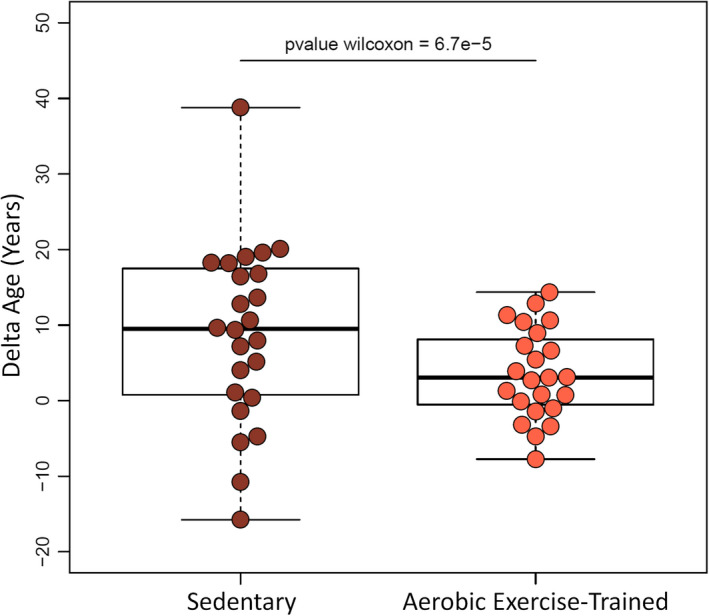Figure 5.

We used our ultra‐predictive aging clock to predict age in a human plasma proteomic dataset containing sedentary subjects as well as individuals that are aerobic exercise‐trained. For sedentary subjects, their respective chronological and predicted ages were 37.54 ± 20.88 and 46.34 ± 26.48 years. For aerobic exercise‐trained subjects, their respective chronological and predicted ages were 37.35 ± 19.82 and 40.91 ± 18.48 years. Results are presented as mean ± standard deviation. The difference in delta age (i.e., the difference between chronological and predicted age) between sedentary and aerobic exercise‐trained subjects was statistically significant (p‐value = 6.7E−5)
